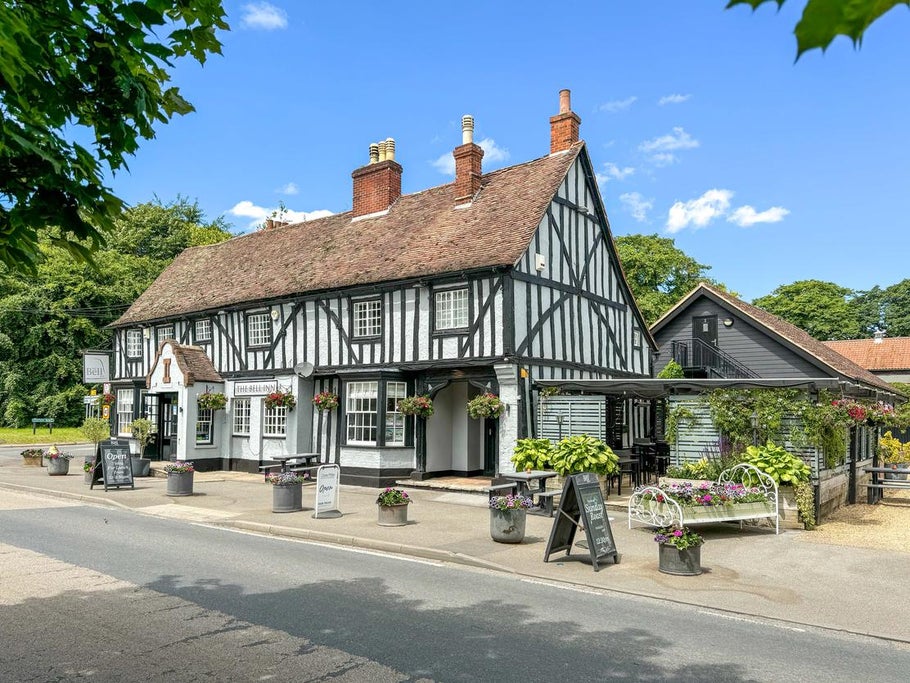Pub Valuation as a Going Concern: Demystifying the Profits Method of Valuation
Sean Ludden MRICS, Director - Valuation at Christie & Co, discusses approaches to valuing hospitality businesses.
Business. Built around You.
Your expert business property advisers


Old surveying joke: What do you get when you put two pub valuation surveyors in a room? Three opinions of value!
Therein lies the mystery, because at the heart of every valuation, is a valuer’s opinion.
That opinion must be arrived at after careful consideration of all the facts and the comparable evidence, but inevitably, it is nothing more than a well-informed opinion given a set of circumstances and struck on a particular date (the date of valuation).
Whether you're valuing a one-bedroom flat, a three-bedroom semi-detached house, a retail warehouse or a country pub, a valuation is ultimately someone’s opinion.
OK, enough of the word opinion for now. Let's look at the facts.
When you're valuing a pub or other type of leisure and hospitality business, if it’s open and trading as a going concern (and mostly when it’s not), you value it as a fully equipped and operational entity having regard to trading potential. If it’s closed, you would make adjustments to reflect that it is not trading.
The valuer will therefore necessarily adopt the Profits Method of valuation. There are only five methods of valuation… and some might say the Profits Method is a ‘mysterious art’ compared to say the Comparable Method or the Investment Method. I mention the other two methods, the Residual Method and the Depreciated Replacement Cost Method, for the sake of completeness.
So, back to the mysterious art…
Pub valuers must assess the trading potential, even when a pub is closed, and in doing so, adopt the reasonably efficient operator (REO) model which fundamentally puts to one side any under or over trading, and assumes the business is owned and operated by… well, a reasonably efficient operator!
This approach therefore disregards the ‘super competent operator’ that may be achieving levels of turnover and profitability that would not ordinarily be achieved, whether this is due to group purchasing power when considering gross profit margins, or an operator that has traded a business for the last 20 years and been seen front of house every day, thereby disregarding what is classed as personal goodwill attaching to that operator. It also disregards underperformance where owners or operators perhaps lose interest or focus, or step away from the business leaving it to flounder under a weak or inexperienced manager.
So, we must first work out what the fair maintainable trade (FMT) - turnover - is from preferably analysing the last three years profit and loss accounts and considering the future trading potential, and then deduct the costs of purchases and operational expenses, to arrive at an opinion of net profit.
It is this net profit, or more properly referred to as fair maintainable operating profit (FMOP) that valuers capitalise by using a years’ purchase (YP) multiplier to produce an opinion of Market Value for the property and business.
If the business is freehold, it will of course implicitly include the property elements as the YP must reflect not only the trade in hand, but the underlying value of the property from which the business trades.
If the business is leasehold with a tenant operator paying rent to a landlord, the operator will not own the freehold interest (the land and property) and therefore the market will pay substantially less for a business without the freehold property elements. In this instance, the market is buying the lease which enables the business to trade.
Both sets of multipliers will implicitly reflect location, size, condition, trading characteristics and the leasehold YP will reflect lease length, the various terms, the rent and rent review provisions.
Now, you might be wondering what the YP is or means?
The YP is how long it would take you to get your money back (the purchase price excluding purchasers’ costs) if the FMOP remained the same year after year, which of course it won’t. So, let’s say we are valuing a freehold owner operated pub in the Midlands that does a steady trade year on year, serving a good selection of beers, wines, spirits and minerals and traditional pub grub and we have applied a 7.0 YP to our assessment of FMOP. The 7.0 represents seven years to achieve pay-back (seven years purchase). The YP is the reciprocal or the inverse of the yield (100/7=14.29%) and yields are an important benchmarking and comparison metric.
Property is illiquid, so there should be a yield gap between gilts (which are liquid and can be sold relatively quickly), other investments, and property to reflect the different risk and liquidity aspects. Gilts/UK bonds used to be referred as the ultimate risk-free rate of return as it was thought (and hopefully still is) most unlikely that the UK Government (UK plc) would default on its loans (and the downgrading by analysts that would result), but I’m not an economist, so won’t venture any further comment or opinion.
Therefore, a yield of 14.29% (derived from the 7.0 YP adopted above) reflects all the property based and operational risks attaching to owning and running a business, compared to say a pub let to a ‘decent covenant’ tenant producing a rent of say £80,000 per annum, which might attract a yield of say 8.00% (12.5 YP).
So, the riskier and more volatile the opportunity, the quicker the buyer will want to be paid back (a lower YP). An investor (as distinct to an owner operator) will be prepared to wait longer for pay back (accepting a higher YP) in the hope that the rent will keep rolling in year after year from a good tenant with little or no management effort… save as to perhaps just collecting and banking rent. This is huge oversimplification of the investment approach, but I hope you get it.
Chartered surveyors play a huge role in the property industry, and for one example, banks do not (usually) lend money without an independent valuation undertaken by a suitably qualified and experienced chartered surveyor, backed by appropriate professional indemnity insurance.
So, after reading this whistlestop tour of the Profits Method, if I can help you or your clients with any pub, restaurant or any form of leisure or hospitality valuation or advisory work, please contact me on the details set out below… and I promise, the answer isn’t always 7.0 YP!
For more information, contact:
Sean Ludden MRICS
Director – Valuation, Christie & Co
Sean.Ludden@Christie.com
07736 615 872